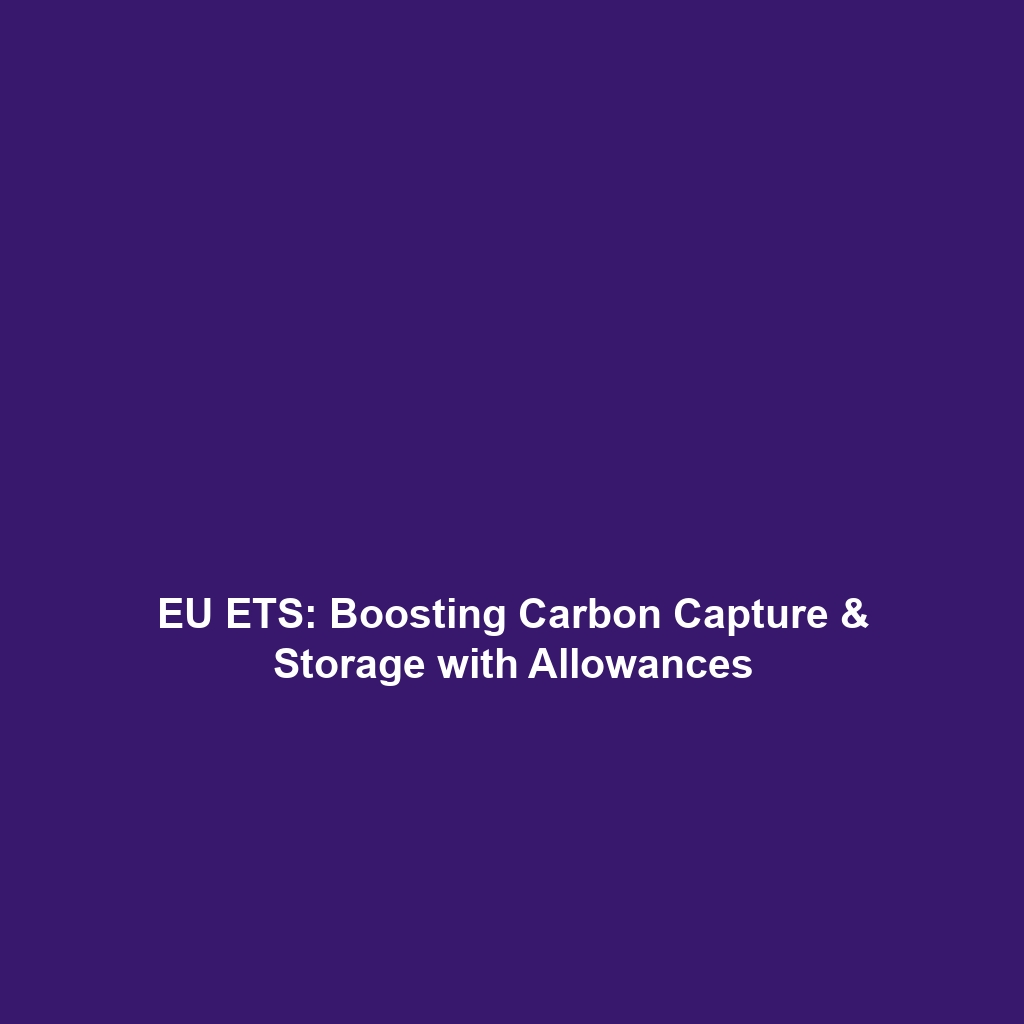Examples: The European Union Emissions Trading System (EU ETS) Includes Allowances for CCS Projects
Introduction
The European Union Emissions Trading System (EU ETS) plays a pivotal role in the global effort to combat climate change. As a cornerstone of the EU’s climate policy, it allows for the inclusion of Carbon Capture & Storage (CCS) projects, contributing to significant reductions in greenhouse gas emissions. This integration of CCS within the EU ETS framework not only incentivizes sustainable practices but also promotes technological innovation. Understanding the importance of CCS allowances within the EU ETS is crucial for grasping the broader scope of climate action and carbon management strategies.
Key Concepts
Understanding EU ETS
The EU ETS is a market-based approach to controlling greenhouse gas emissions. It works on a “cap and trade” system where a cap is set on total emissions and companies can buy or sell allowances based on their needs. Key concepts related to this system include:
- Cap and Trade: A system that allows the trading of emissions allowances to incentivize reductions.
- Carbon Credits: Each allowance represents the right to emit one ton of CO2, encouraging companies to invest in CCS technologies.
Role of CCS in EU ETS
CCS technologies capture up to 90% of the CO2 emissions produced from the use of fossil fuels in electricity generation and industrial processes. By allowing CCS projects within the EU ETS, the system:
- Enhances the feasibility and economic viability of CCS.
- Promotes investment in innovative carbon management technologies.
Applications and Real-World Uses
The integration of CCS allowances in the EU ETS facilitates various real-world applications, including:
- Reduction of Industrial Emissions: Industries can integrate CCS into their operations, leading to substantial emission reductions.
- Investment in Renewable Energy: Funds generated through the sale of allowances can be reinvested into renewable energy projects, amplifying climate benefits.
- Research Initiatives: Supports ongoing research into new materials and processes for enhanced CCS effectiveness.
Current Challenges
Despite its advancements, the application of the EU ETS in facilitating CCS projects faces several challenges:
- High Initial Costs: Significant investment is required upfront to develop CCS technologies.
- Public Acceptance: Communities may be skeptical about the safety of storing CO2 underground.
- Regulatory Hurdles: Complicated regulations can deter investment and participation in CCS projects.
Future Research and Innovations
Ongoing research and innovations are crucial for advancing CCS technologies and their effectiveness within the EU ETS framework. Key areas of focus include:
- Next-Gen Capture Technologies: Development of more efficient means of CO2 capture, promising to lower costs and improve efficiency.
- Public-Private Partnerships: Collaborative approaches between governments and industries to enhance funding and knowledge sharing.
- Enhanced Monitoring Techniques: Innovations in monitoring CO2 storage to ensure safety and efficacy.
Conclusion
In summary, the European Union Emissions Trading System (EU ETS) is pivotal in promoting Carbon Capture & Storage (CCS) projects as a method for reducing greenhouse gas emissions. This system not only facilitates sustainable economic growth but also represents a crucial step towards achieving a low-carbon future. For further reading on CCS technologies and their implications for climate policy, explore our other articles on the basics of CCS and the EU ETS overview.
